Abstract
Elongation of hypocotyls of sunflower can be promoted by gibberellins (GAs) and inhibited by ethylene. The role of these hormones in regulating elongation was investigated by measuring changes in both endogenous GAs and in the metabolism of exogenous [3H]- and [2H2]GA20 in the hypocotyis of sunflower (Helianthus annuus L. cv Delgren 131) seedlings exposed to ethylene. The major biologically active GAs identified by gas chromatography-mass spectrometry were GA1, GA19, GA20, and GA44. In hypocotyls of seedlings exposed to ethylene, the concentration of GA1, known to be directly active in regulating shoot elongation in a number of species, was reduced. Ethylene treatment reduced the metabolism of [3H]GA20 and less [2H2]GA1 was found in the hypocotyls of those seedlings exposed to the higher ethylene concentrations. However, it is not known if the effect of ethylene on GA20 metabolism was direct or indirect. In seedlings treated with exogenous GA1 or GA3, the hypocotyls elongated faster than those of controls, but the GA treatment only partially overcame the inhibitory effect of ethylene on elongation. We conclude that GA content is a factor which may limit elongation in hypocotyls of sunflower, and that while exposure to ethylene results in reduced concentration of GA1 this is not sufficient per se to account for the inhibition of elongation caused by ethylene.
Full text
PDF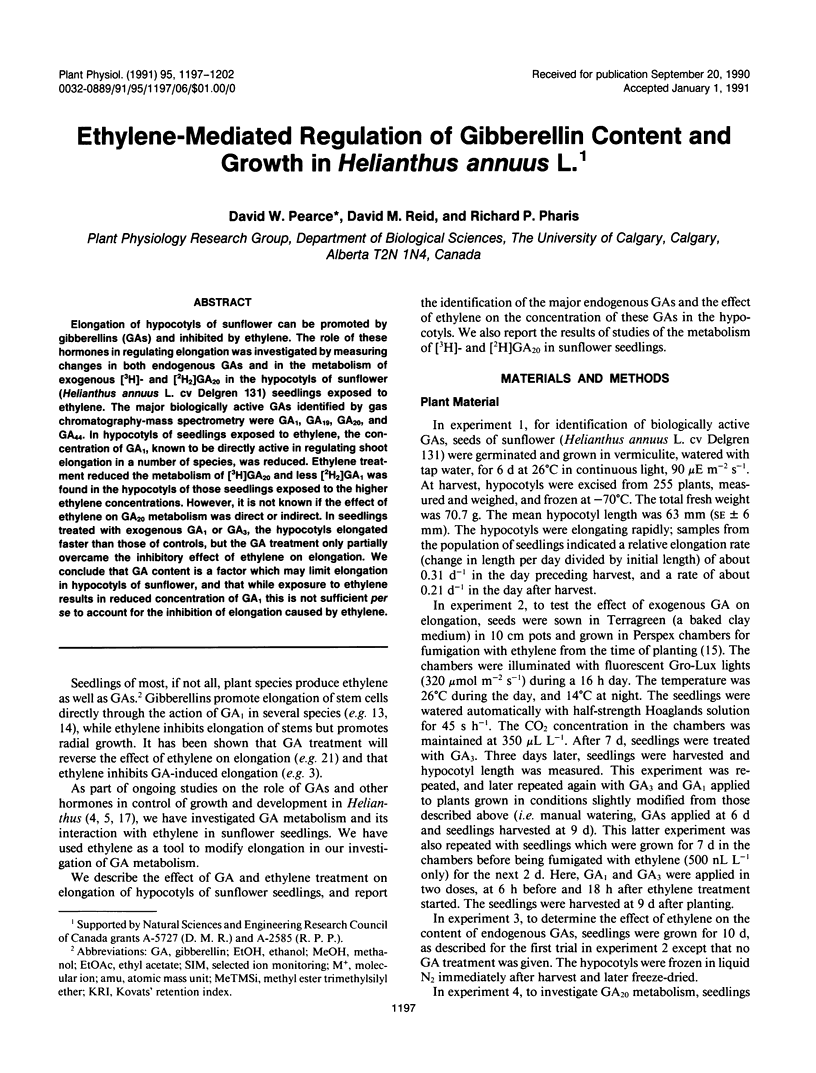
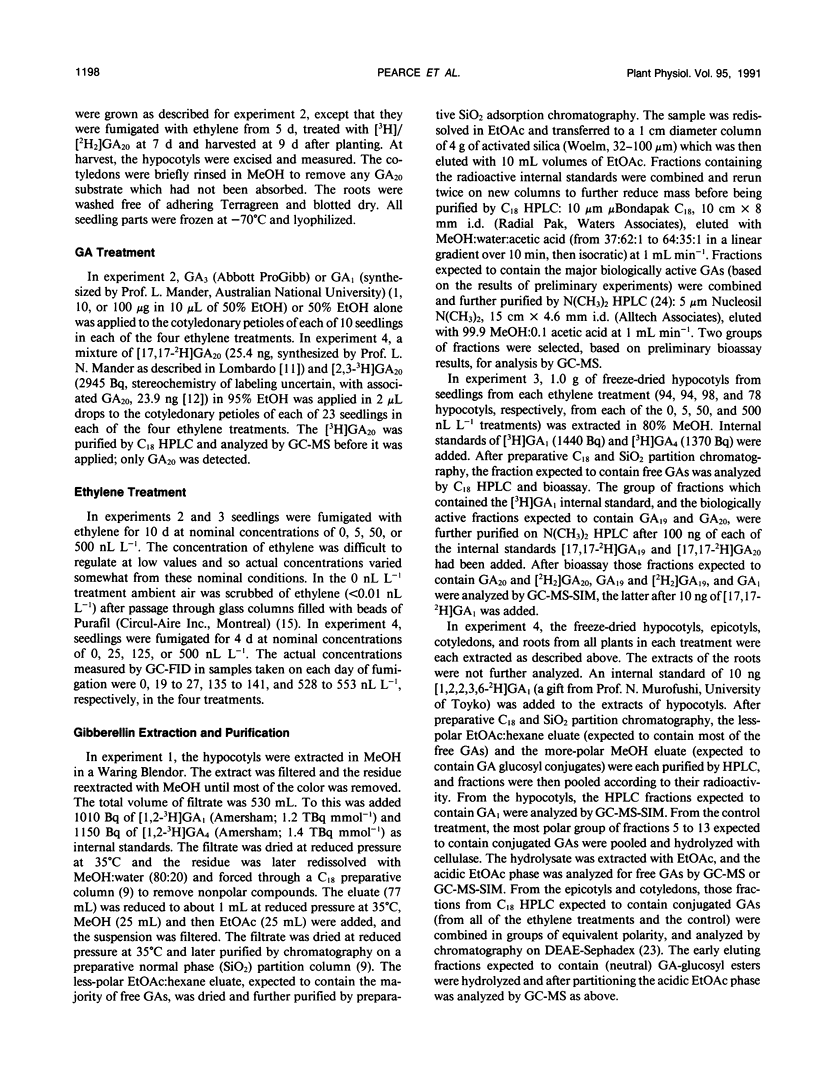
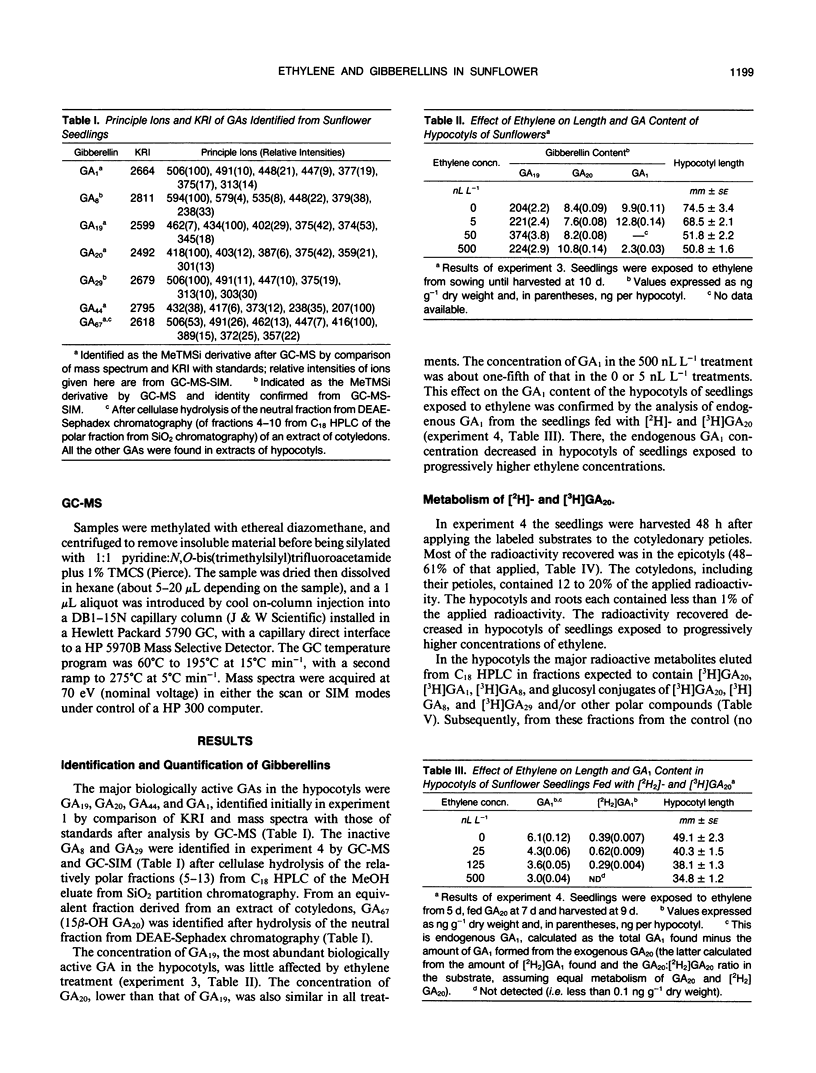
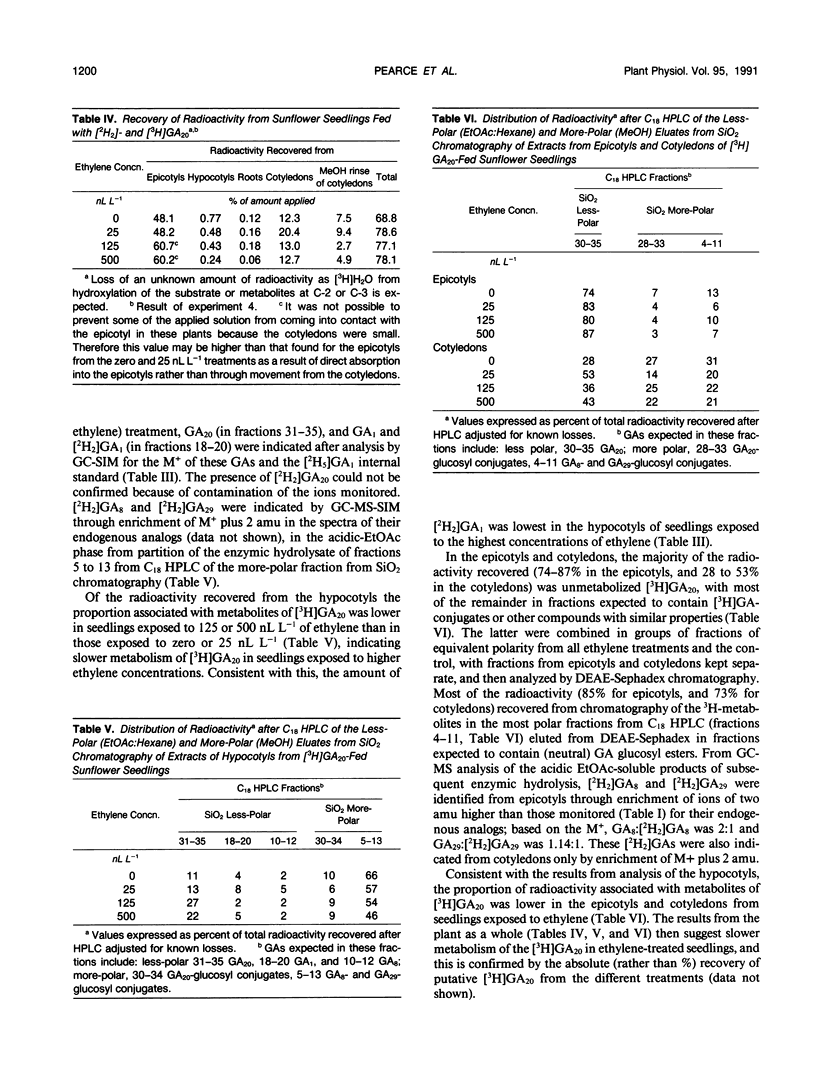
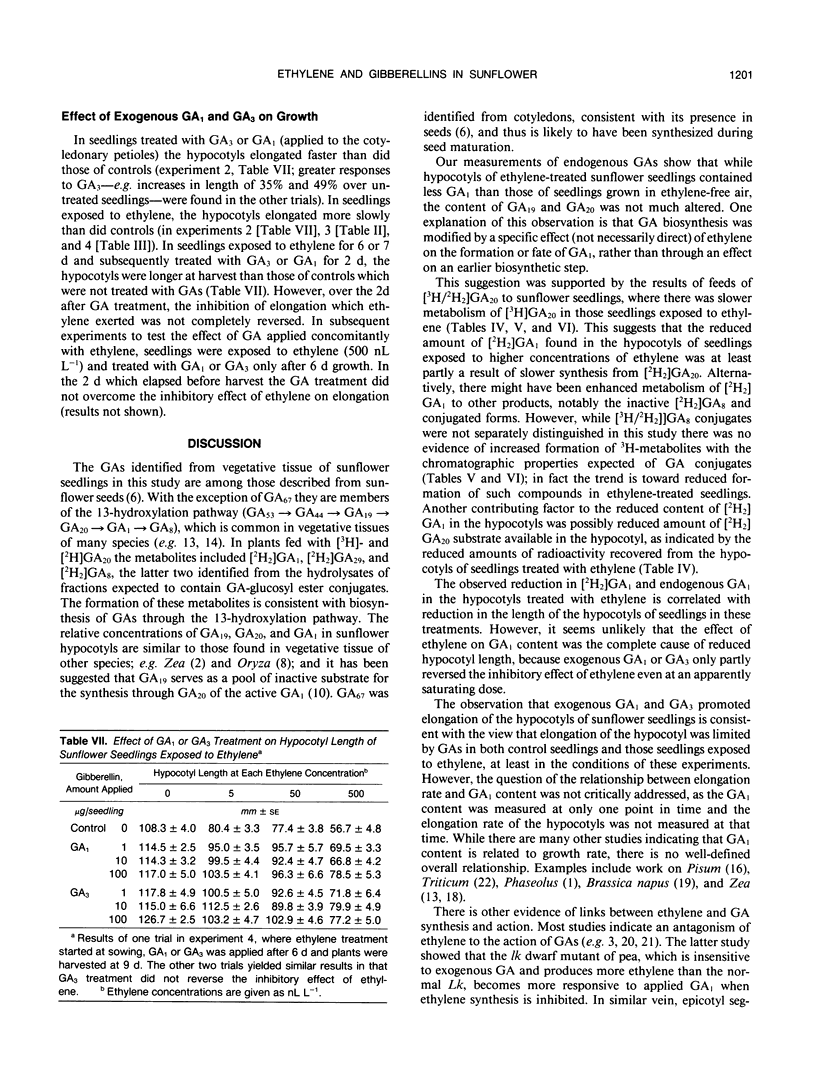
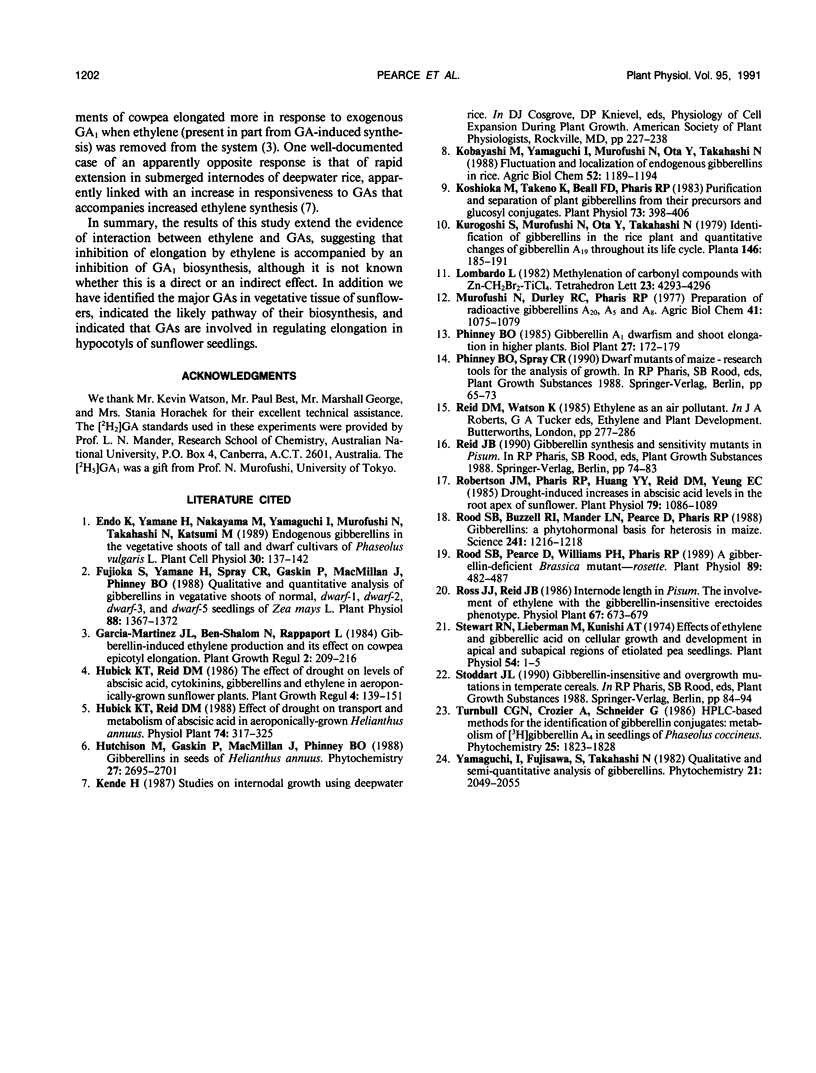
Selected References
These references are in PubMed. This may not be the complete list of references from this article.
- Fujioka S., Yamane H., Spray C. R., Gaskin P., Macmillan J., Phinney B. O., Takahashi N. Qualitative and Quantitative Analyses of Gibberellins in Vegetative Shoots of Normal, dwarf-1, dwarf-2, dwarf-3, and dwarf-5 Seedlings of Zea mays L. Plant Physiol. 1988 Dec;88(4):1367–1372. doi: 10.1104/pp.88.4.1367. [DOI] [PMC free article] [PubMed] [Google Scholar]
- Koshioka M., Takeno K., Beall F. D., Pharis R. P. Purification and separation of plant gibberellins from their precursors and glucosyl conjugates. Plant Physiol. 1983 Oct;73(2):398–406. doi: 10.1104/pp.73.2.398. [DOI] [PMC free article] [PubMed] [Google Scholar]
- Robertson J. M., Pharis R. P., Huang Y. Y., Reid D. M., Yeung E. C. Drought-induced increases in abscisic Acid levels in the root apex of sunflower. Plant Physiol. 1985 Dec;79(4):1086–1089. doi: 10.1104/pp.79.4.1086. [DOI] [PMC free article] [PubMed] [Google Scholar]
- Rood S. B., Buzzell R. I., Mander L. N., Pearce D., Pharis R. P. Gibberellins: a phytohormonal basis for heterosis in maize. Science. 1988 Sep 2;241(4870):1216–1218. doi: 10.1126/science.241.4870.1216. [DOI] [PubMed] [Google Scholar]
- Rood S. B., Pearce D., Williams P. H., Pharis R. P. A Gibberellin-Deficient Brassica Mutant-rosette. Plant Physiol. 1989 Feb;89(2):482–487. doi: 10.1104/pp.89.2.482. [DOI] [PMC free article] [PubMed] [Google Scholar]
- Stewart R. N., Lieberman M., Kunishi A. T. Effects of ethylene and gibberellic Acid on cellular growth and development in apical and subapical regions of etiolated pea seedling. Plant Physiol. 1974 Jul;54(1):1–5. doi: 10.1104/pp.54.1.1. [DOI] [PMC free article] [PubMed] [Google Scholar]


